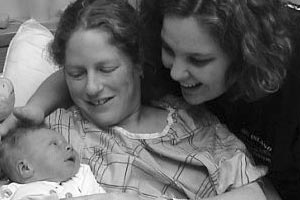I take a recreational interest in personality or group skills "typing" tools such as the
Myers-Briggs Type Indicator and the
DISC Profile.
I've come up with my own: the Jigsaw Puzzle Personality Profiler.
The idea came to me after Spouse and I had a heated discussion about the merits of an
old jigsaw puzzle of mine that I retreived from my parents' attic. It's 500 pieces of chocolate chip cookies, some flying out the top of an overflowing cookie jar. Needless to say, it's a lot of brown and black.
Spouse kept looking at it and shaking his head. Finally he said, "I don't see how there can be any appeal to doing something like that. All the pieces look the same and when you get done, you just have a picture of cookies."
He, too, enjoys jigsaw puzzles. But he much prefers the
New England landscape variety.
The more we talked, the more I realized people have very different motivations for doing puzzles. I like the challenge of finding order among so many similar pieces. Indeed, one of my favorite puzzles is the image of a jigsaw puzzle, where each piece is a different color. That image has been cut up into jigsaw pieces so that each piece contains several colors. It's damn near impossible. But also a lot of fun.
Others enjoy puzzling, literally, for the big picture, making something singularly beautiful and integrated out of small fragments. I think these people also like to keep the finished product around for a while.
Then there are those (Mom!) who consider jigsaw puzzles a form of Chinese water torture. So many pieces, over and over...
What does your favorite puzzle say about you? Let me take a guess:
If you prefer interesting images over difficult assembly: You are a visionary. In any situation, you imagine possibilities, rather than dwell on limitations. You think about the future more than the present. You can be given to flights of fancy and sometimes need others to bring you back to earth. Your creativity and ability to synthesize pieces of information make you an inventive problem solver.
If you prefer difficult assembly over interesting images: You are pragmatic and detail-oriented. Methodical progression through a problem is as appealing as reaching a conclusion. You are an analytical and patient problem solver, though you can shoot down others' ideas if they seem too far-fetched. You tend to lose patience with dreamers. You much prefer to operate in the present reality.
If you prefer just about anything to doing a jigsaw puzzle: You are an active body with little patience for starry-eyed naval gazing or meticulous inspection of life's details. Your motto is "Seize the Day." You can be seen by others as a task master and possibly as bossy (Mom!), but you're also likely to be the first set of hands involved in resolving a problem -- provided it's one that can be solved physically.
Am I on the money? Should I get a patent?







